It’s not until you get close that you see this bird shine with his shimmering purplish-blue iridescence.
Meet the Purple Martin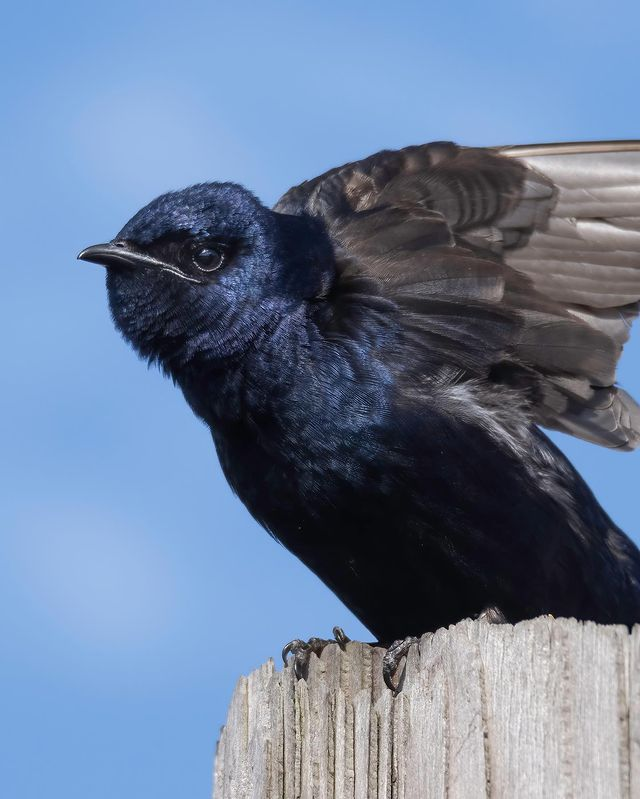
The purple martin (Progne subis) is North America’s largest swallow, measuring 20 cm in length. Adult males are a glossy iridescent dark purple sheen caused by the refraction of incident light giving them a bright blue to navy blue or deep purple appearance. In some light, they may even appear green in color. They also have a long forked tail.
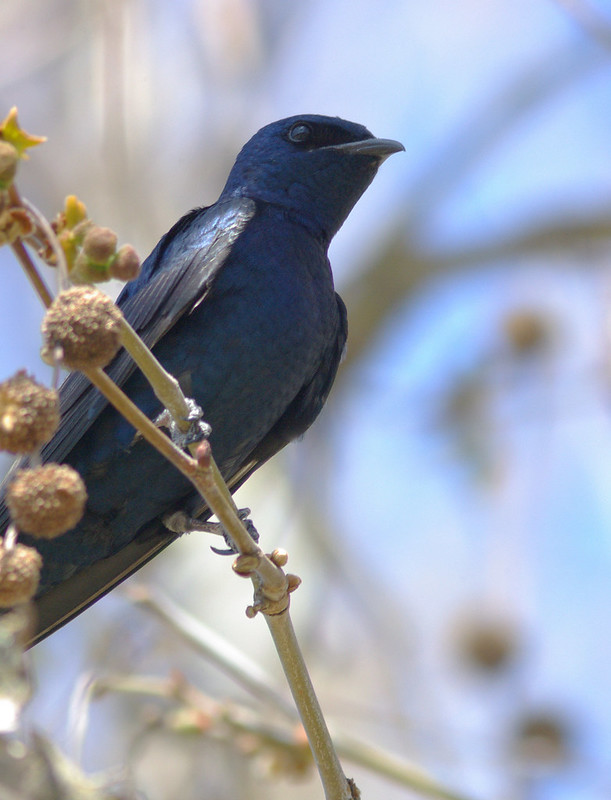
Photo Courtesy of ALAN SCHMIERER / Public domain
Adult females are dark on top with some purple on the back and lighter underparts.
Juveniles are greyish-brown above and whitish below, gaining some purple feathers by their first winter.
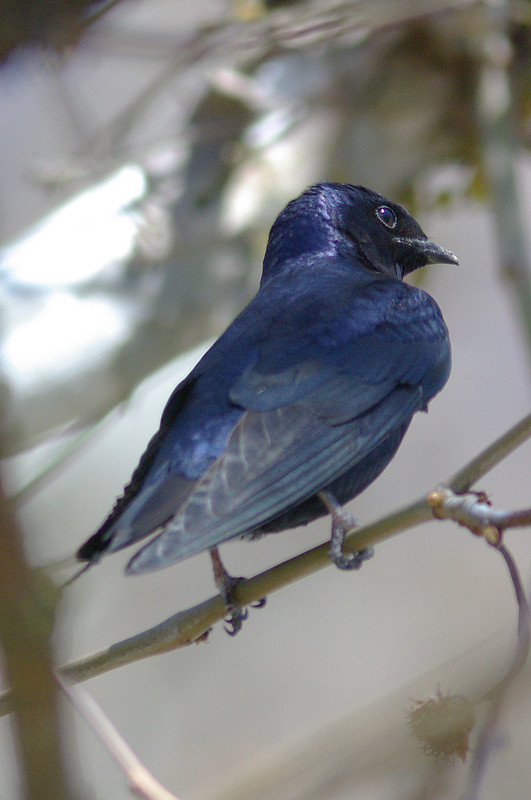
Photo Courtesy of ALAN SCHMIERER / Public domain
These birds are typically found across eastern North America, and also in some locations on the west coast from British Columbia to Mexico. The Purple Martin migrates to the Amazon basin in winter.
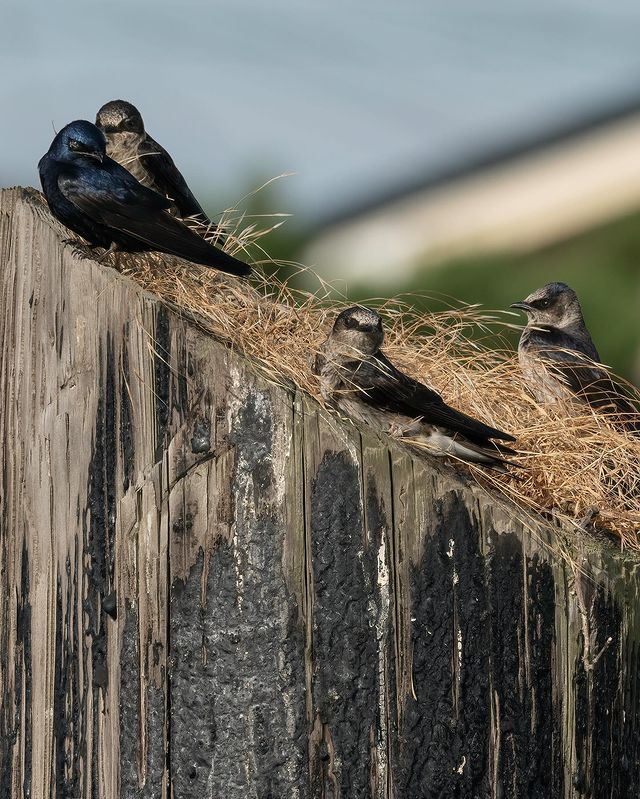
Purple martin like to live in or around towns, farms, and semi-open country near water, also mountain forests, saguaro desert.
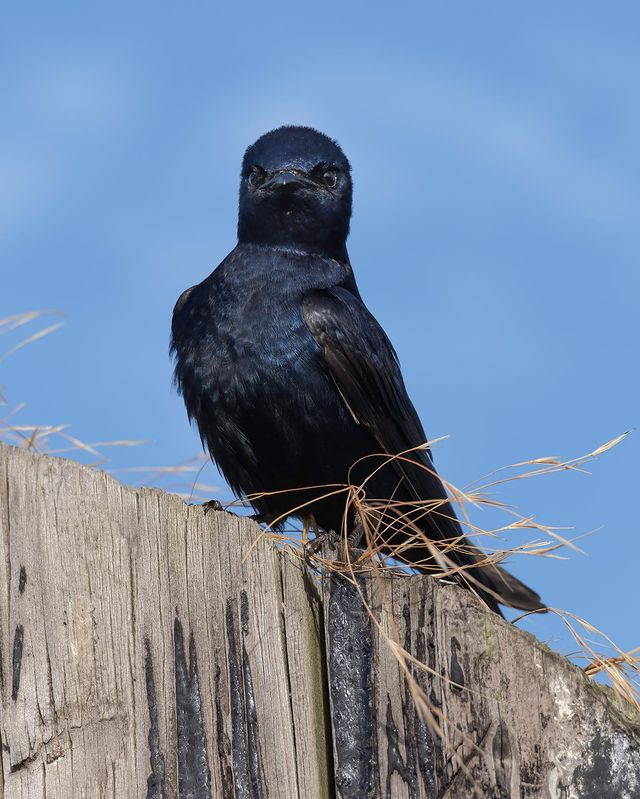
These birds forage by hunting flying insects, including many wasps, winged ants, and bees; also many true bugs, flies, beetles, moths, and butterflies. Dragonflies may also be important in their diet. They will also eat some spiders.
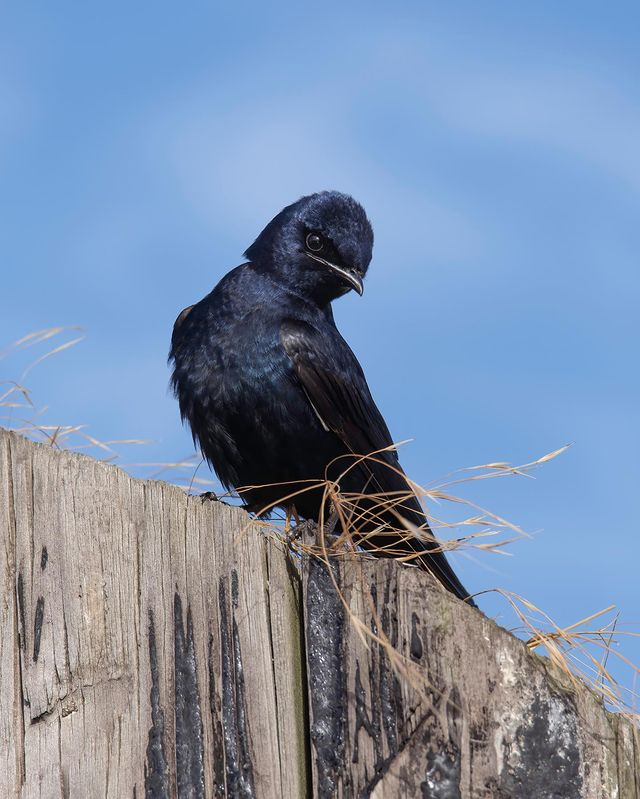
Natural nesting sites for Purple Marins are in cavities, mostly old woodpecker holes, in trees (or in giant cacti in the Southwest). In the East, most martins now use nesting boxes. Sometimes they have been known to nest in holes in buildings or cliffs. A nest, built by both sexes, is a cup of leaves, grass, twigs, debris, and usually mud. Up to 3 to 8 white eggs are laid within and are incubated by the female for 15 to18 days. Both parents bring food for nestlings who then leave the nest after around 26 to 31 days.
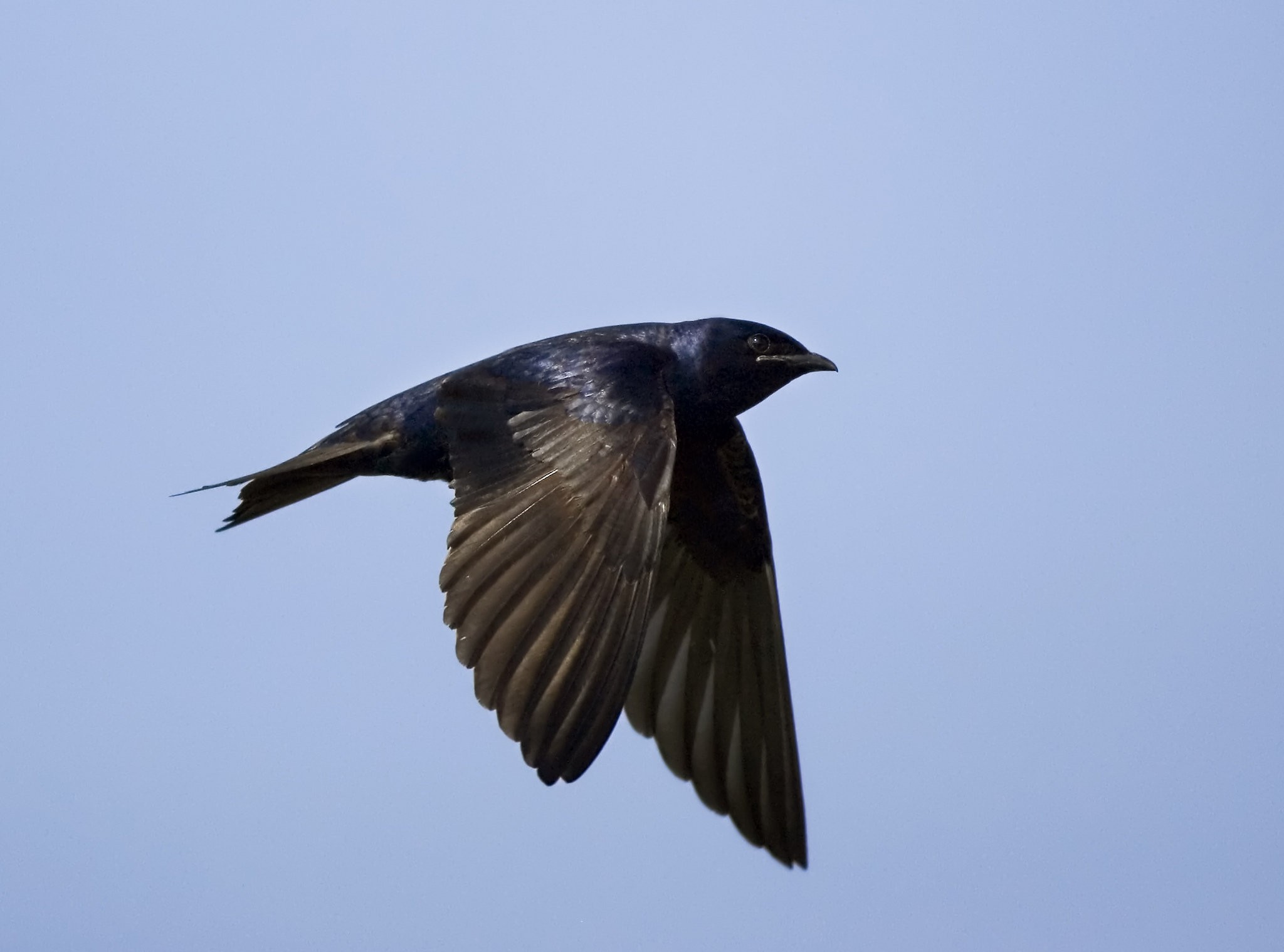
Purple martins suffered a severe population crash in the 20th century widely linked to the release and spread of European starlings in North America. Though they are still regarded as of least concern on the IUCN Red List.
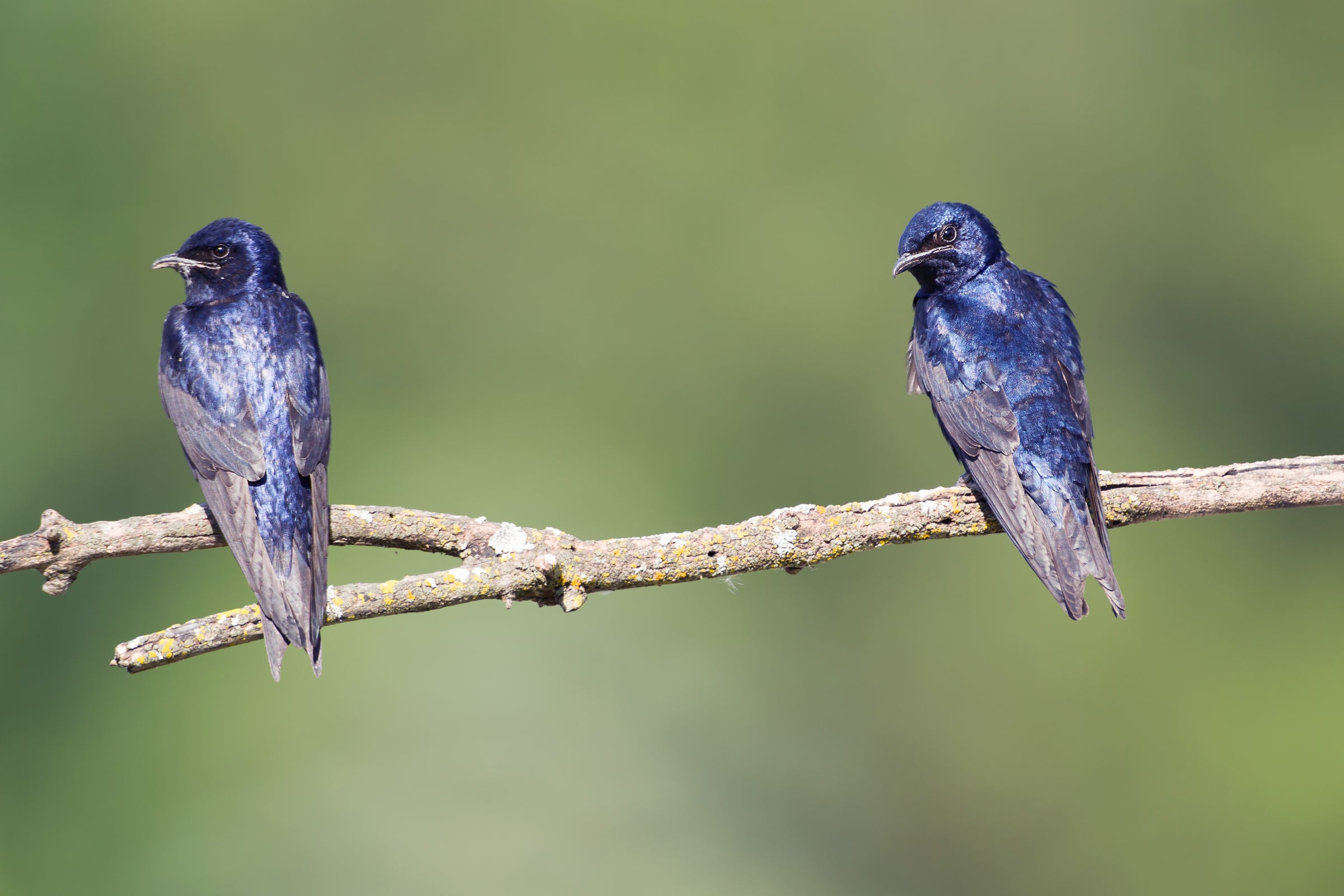
You can watch and listen to this bird right here in the video below:




